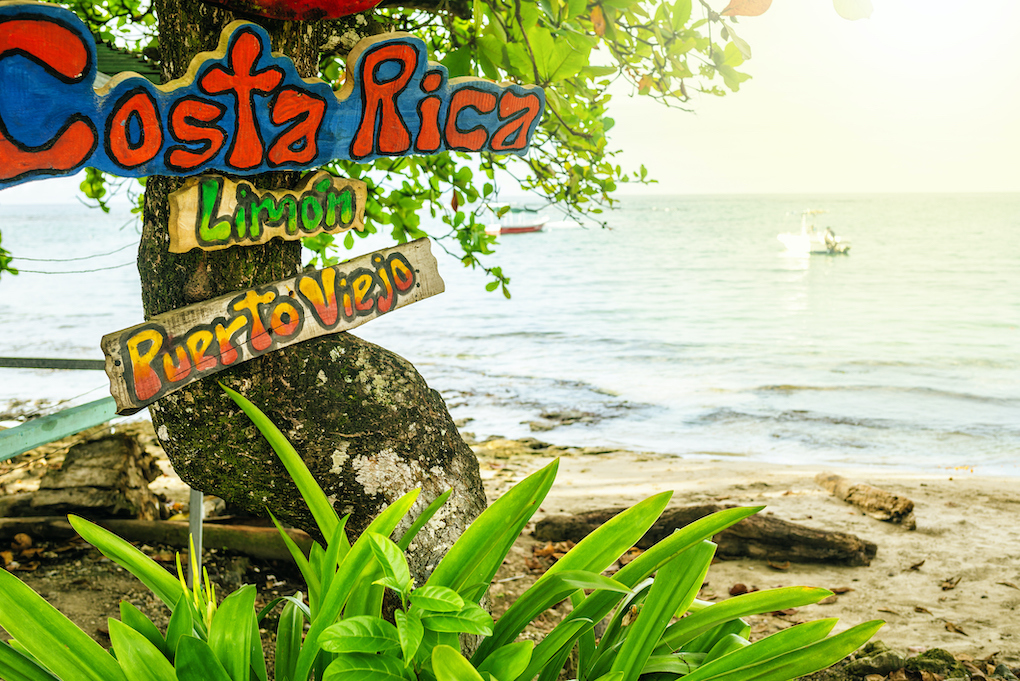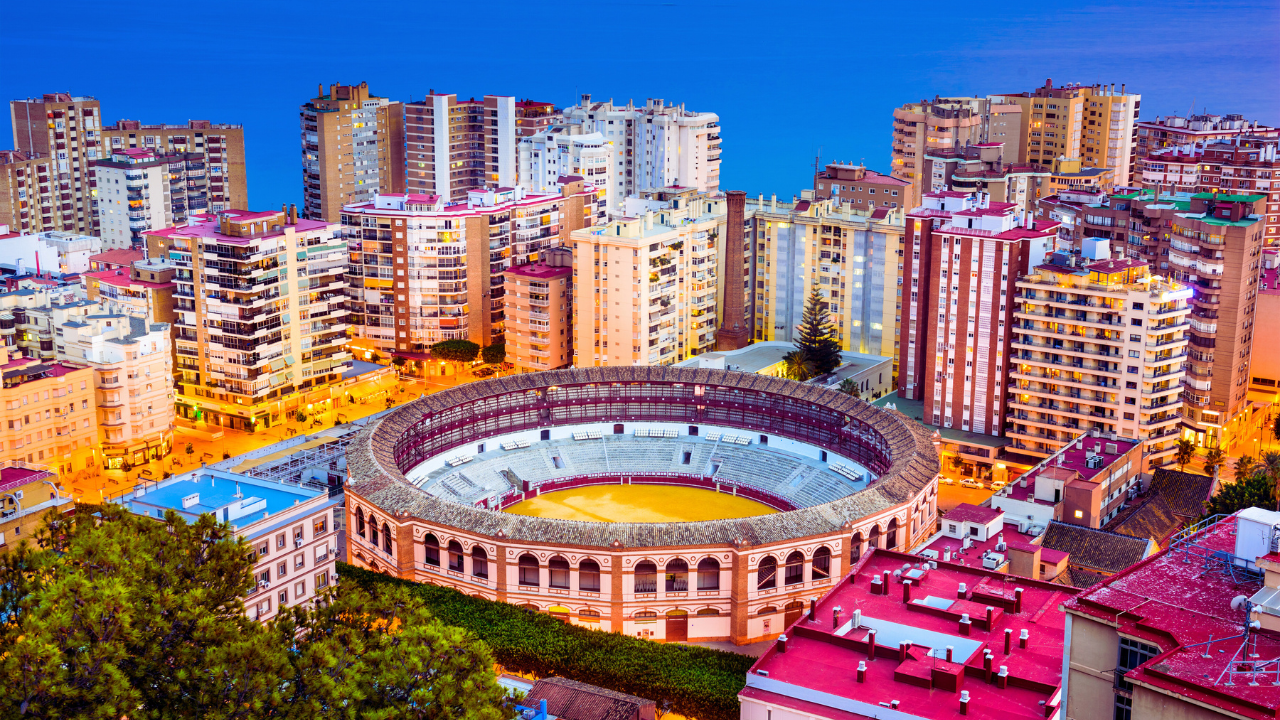The first thing to know about Puerto Viejo is that it packs all the punch and flavor of what you expect from one of Central America’s most undeniably Caribbean coastal towns.
The popular beach town on Costa Rica’s Caribbean coast is deeply inspired by Jamaican culture, displaying colorful references to the Rastafari faith in art, mentality and even in the Reggae music found distantly sung or playing in the palm-tree lined streets.
Not to be confused with Puerto Viejo de Sarapiqui, Puerto Viejo de Talamanca’s slow-paced town is the go-to destination in Costa Rica for travelers who shun the luxury lifestyle and prefer to fully ‘pura vida’ their way through the trip.
Densely populated with African descent communities, Puerto Viejo is popular amongst Black travelers because of its rich indigenous culture, offering a vastly different experience from the Pacific coast. If you’re planning on discovering the dizzying tropical landscapes and plentiful Costa Rican jungle for yourself, here is what to know before your trip:
Weather and Best Time To Travel
Puerto Viejo’s weather is absolutely tropical, unapologetically so. Puerto Viejo has a significant amount of rainfall in the rainy season from November to January and then once again from April to August. February and March are typically drier months when you can enjoy a well-watered, greener version of the town. September and October are also very safe months across the Caribbean, where uninterrupted sunshine can be enjoyed daily.
The best time to visit is typically in September, where the temperatures are dry and not unbearably high. Being located in one of the most bio-diverse countries in the world, exploring the lush outdoors is not all that is on offer for Puerto Viejo. If you do find yourself there during the wetter months, you’ll enjoy a range of activities from one of the many indoor yoga studios to wandering through the town’s favorite Luluberlu Art Gallery.
The busiest month for tourism is June, followed closely by March and July. Expect prices for accommodation and flights to rise around these months, but equally expect to see the already vibrant town come to life even more with notable variety in activities. Off-peak seasons are between August – November.
Travel in Puerto Viejo
Since it is a relatively small beach town, it is normal to enjoy the town by foot or more typically by bike. Located about an hour’s drive from the port city of Limón, Puerto Viejo is the ideal location for getting to know more of the Limón region. There is a bus that passes through Limón so make like a local and flag it down to keep the wanderlust for the Caribbean coast alight.
There isn’t an airport, so travelers usually fly from Limón airport which is the closest, or they come straight from Costa Rica’s SJO Airport (near the capital city San Juan), and take a 4-5 hour bus journey.
Things To Do
Unsurprisingly, Puerto Viejo is abundant in beautiful beaches and turquoise waters. Whether you want to have a surfing moment or simply relax in the Costa Rica’s Caribbean pulse of slow-living, there are several options to choose from. Playa Negra, the black sand beach, is a popular option for travelers looking for relatively calm waters and immaculate views. Playa Punta Uva is another beach option with pristine white sand beach aesthetics that make for gorgeous sunset pictures. Playa Cocles is the go-to surf spot.

Exotic high-altitude adventures are also available for travelers hoping to indulge in the town’s National Parks and jungle trails. Popular options include Manzanillo National Park and Cahuita National Park, located just north of Puerto Viejo. For more outdoorsy goodness, the Jaguar Rescue Center is an option for those hoping to experience the country’s wildlife initiatives or even volunteer.
The Bri Bri Indigenous village tour is also a day trip just outside of Puerto Viejo not to be skipped if you’re hoping to learn about native Costa Rican history in the region. Visiting the village, learning about the Bribri people and walking through the tropical forests will help you properly appreciate the land, the culture and the traditions that make Puerto Viejo and the neighboring area so endlessly enriching.
Also, expect your tastebuds to confuse Puerto Viejo for Jamaica. With an abundance of Caribbean inspired meals (think patties, rice and peas, plantain, ackee and jerk chicken) you’ll have the perfect meal to accompany your sunset filled evenings. While you’ll find the best street food in Costa Rica with ease here, you’ll also be able to find Vegan/Vegetarian and more traditional Costa Rican restaurants and fusions too.
It is useful to know that beyond beach-hopping, many travelers enjoy making their way to the breathtaking Panamanian archipelago of Bocas del Toro, only a few hours away.
Where to stay
Puerto Viejo offers almost infinite accommodation options. You’ll be able to find a great blend of locally owned, Caribbean inspired accommodations. True to the unglamorous though naturally outstanding nature of the town, accommodation options are typically budget-friendly, centrally located and often include an irresistible ocean view or a night spent in the lush jungle. Note that prices will vary to accommodate for the high and low seasons.
COVID-19 measures
From January 8, Costa Rica will require proof of vaccination for access to many amenities including some hotels, restaurants, bars, museums and popular adventure tourism services. While proof of vaccination will not be required for entry into the country, the Costa Rican tourism board confirms that these requirements will apply to anyone over the age of 12. From January 8, travel insurance will also be a requirement for unvaccinated travelers aged 12 and above.
Whenever you decide to venture to Puerto Viejo, you’re sure to leave full of love for the best of what Costa Rica’s Caribbean has to offer.





